Art tonic
Updated: 2019-08-23 07:49
By Chitralekha Basu(HK Edition)
|
|||||||||
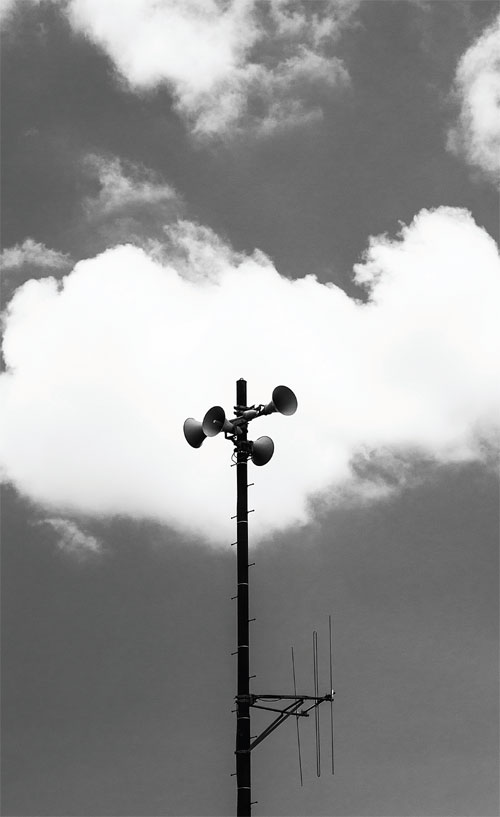
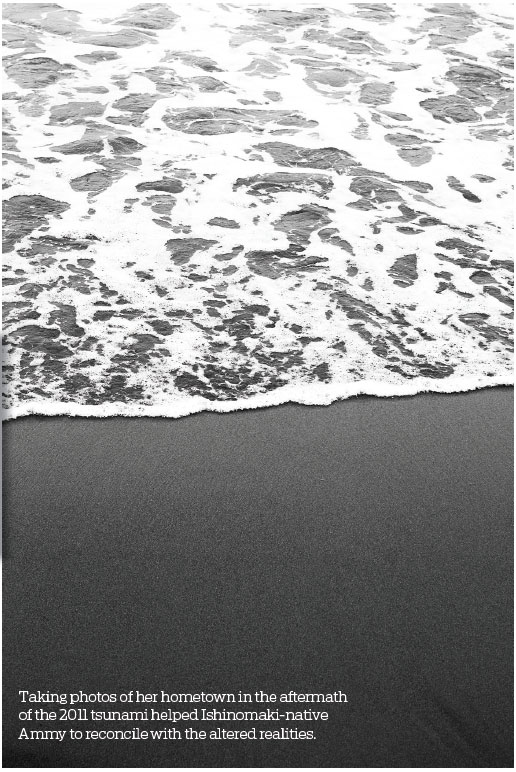
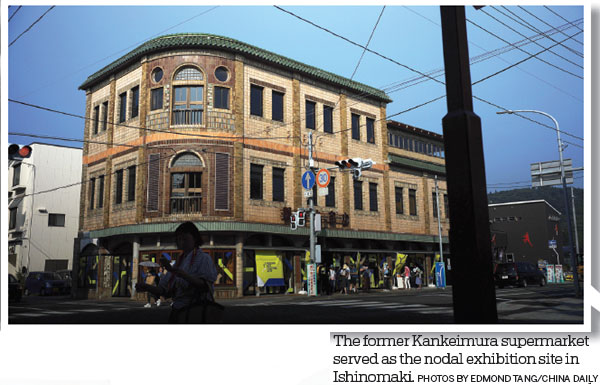

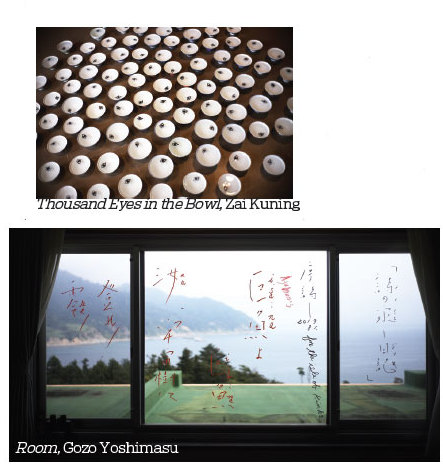
Reborn Art Festival has made a significant impact on the recovery and rejuvenation of the people scarred by Japan's 2011 tsunami by bringing art into their lives. Chitralekha Basu reports.
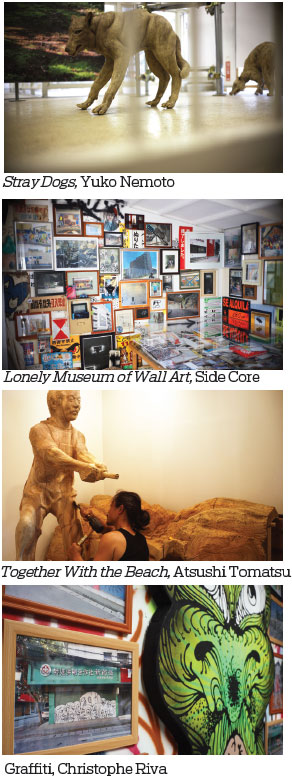
For years Tomomi Abe had lived in fear of sirens going off, broadcasting the arrival of yet another tsunami. The one that struck Japan's northeastern coast on March 11, 2011 had left her homeless and bereaved of several loved ones. In the aftermath of the disaster - in which 29,000 people living in her native Ishinomaki lost their homes overnight - Abe had managed to salvage a few things from her 17-year-old life and was staying in a temporary shelter with corrugated metal sheets for walls. Still, she was better off than the 3,097 people killed by the tsunami and the 2,770 who were untraceable. And yet, the looming presence of a cluster of siren amplifiers hoisted on a pole near her new home was taking a toll on her nerves.
Things began to improve after she started taking photographs. By freezing images of the sirens and other new realities of her dramatically altered life, she finally exorcised the specter of nature's fury.
Abe's photographs of her hometown recovering from the 2011 disaster are currently on show at Reborn Art Festival (RAF) 2019. Held in seven tsunami-affected locations in Japan's Miyagi prefecture, the exhibition also showcases new works by international heavyweights Yayoi Kusama, Sebastian Masuda and Anish Kapoor. Abe now calls herself Ammy to mark her reincarnation as an artist. RAF has helped several others like her to cope better with the dehumanizing effects of surviving a lethal natural disaster by including them in a biennial celebration of art. Close observers have reason to believe RAF's pilot edition, launched in 2017, was a turning point in the lives of survivors scarred by the rogue wave.
Sako, a photographer and curator who moved to Ishinomaki from Hiroshima in 2011, has observed this change up close. "When artists began coming to this area (in the lead-up to RAF 2017), the local people were reluctant to talk to them. It was almost like they were scared of outsiders. But now more people seem to be communicating with the artists," she says. "I have seen people from Ishinomaki discuss their problems with visitors from other prefectures. This is quite new."
Another change, says Sako, is a new excitement and eagerness to see the works created by more than 70 artists, often installed in locations far from the urban node of Ishinomaki. On the opening weekend of RAF 2019, early in August, people stood waiting in labyrinthine queues outside a cave in Oginohama to catch a glimpse of installations by Kohei Nawa. Nestled between the hills and the sea, in a forested patch, the spot was inaccessible by motorized transport. And yet visitors kept pouring in, undeterred by the glare of a strong midday sun.
"More people are visiting the exhibitions this time," Sako confirms. "Even in the remote Ayukawa area (the sparsely populated tip of Oshika peninsula), families comprising children and grandparents are coming to experience the art on show."
Take the rough with the smooth
When I ask RAF's founder-director - musician, impact investor and urban farmer Takeshi Kobayashi - if putting up exhibits in locations such as the rarely visited Ajishima Island was meant to test the audience's keenness and commitment level, he says the decision was inspired by the festival's core philosophy.
"The areas covered by RAF are far-flung and do not always have the conveniences of city life," says Kobayashi. "But then that's life. One cannot always have things that are convenient. (Therefore) it's important to be aware of and grateful for the presence of positive elements in our lives."
Fittingly, the theme for RAF 2019 is "Textures of Life".
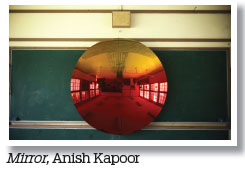
"Living in the kind of world that we do makes us forget that we human beings are a part of nature," says Kobayashi. "Also it's important to remember that the negative and positive exist side by side in the natural world."
A 12.5-meter high concrete wall built along roughly 400 kilometers of Japan's coastline to mitigate the potentially calamitous effects of future tsunamis serves as a metaphor of Kobayashi's thesis about the coexistence of hope and cynicism.
"The wall is highly controversial," says Tohru Matsushita of the Tokyo-based art collective Side Core. "The government invested a lot in terms of resources and money to build this wall which was imposed on the citizens without taking their consent."
Matsushita and his team have turned a section of the wall in Momonoura - an oyster cultivators' village that was almost totally mowed down by the 2011 tsunami - into a site for art. Some of the pieces featured offer a visual comment on the act of putting up a barrier between a fishing community and their natural habitat.
For instance, Taichi Moriyama's Water God is a live installation where the artist himself sits atop his mock shrine - a wooden platform exactly the same height as the sea wall, propped up by discarded buoys used for oyster farming. It's the artist's way of reimagining a local ritual of fishermen paying obeisance to the water god before going out to sea - especially meaningful since all such shrines in the village were washed away in the 2011 tsunami.
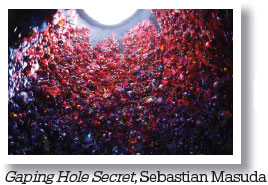
The wall also displays photographs of Christophe Riva's graffiti on shop-front shutters in Nanjing. In his paintings human faces often morph into mysterious creatures. "(In China) Riva chose to paint in areas under massive and rampant reconstruction," says Matsushita. "The show is his visual commentary on how landscapes are changing."
The origin of food
Promoting local food culture by encouraging sustainable farm or sea-to-table dining practices is a key aspect of RAF 2019.
"The Oshika peninsula yields very rich resources from the sea," says Kobayashi. "The seafood and variety of fish are rich in minerals and other nutrients," adding that he sometimes goes scuba diving just to watch the sea creatures.
Nine renowned chefs from different cities in Japan have come together to prepare and talk about food sourced directly from nature in the Reborn-Art Dining restaurant - located on a narrow strip of land paved with crushed oyster shells between the hills and the sea in Oginohama, right next to Kohei Nawa's stunning white aluminum sculpture White Deer.
Deer meat is a local delicacy and seems to be in high demand.
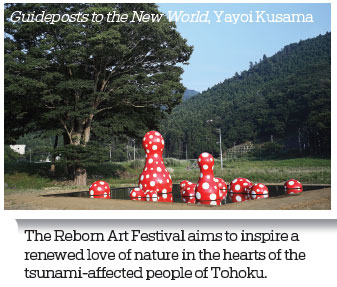
I ask Kobayashi about staging the elaborate ritual of skinning a deer by celebrity chefs Jerome Waag and Shinichiro Harakawa at a time when people who care about the environment are ditching meat.
"The increasing deer population in Kosu Mihama poses a problem, making it necessary to cull a number of them," says Kobayashi. "However, even as we take their lives we do so with respect. A seasoned deer hunter, Nozomu Onodera, has been demonstrating the technique to the artists and I imagine some of that respect for the natural world is reflected in their art."
Be in the moment
Indeed, many of the artists and curators featured in RAF 2019 who live in big cities seemed pleased with the opportunity to watch local people go about making a livelihood based on the region's abundant natural resources. When we meet the poet, musician and filmmaker Gozo Yoshimasu in a hotel room which he says has the best view of the lush Kinkazan Island, he mentions observing the intricate process of hunters cutting up a whale from his window. Happy to have learnt something new at the age of 80, Yoshimasu himself is a live artist-at-work in the hotel room, practicing calligraphy on sheets of paper as well as the glass of the sprawling window panes, even as a steady stream of visitors come and go.
He says he had no particular expectations when he agreed to participate in RAF 2019. "My philosophy is to not have any preconceived notions about things. I'd rather experience the present and be in the moment," he says, refusing to share his memories of the 2011 disaster. "It's not useful."
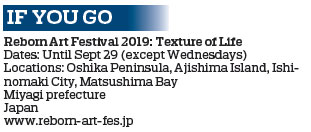
However, the artist Shimabuku, who curated the Ayukawa chapter of RAF 2019, including the performance piece featuring Yoshimasu, feels it's important to memorialize certain things from the past even when they may not be particularly cheerful. "Ayukawa still has traces of things that survived the tsunami," he says. "(Through the exhibition) I wanted to bring people back here and make this place come alive again."
Many of the pieces featured in the singer Ichiko Aoba's installation, Time Signal, for instance, are found objects. "In Ayukawa it's possible to find things on the street that are rich with associations of local culture," says Shimabuku. "It is easy to find whale bones lying here and there, for example."
His own entries in RAF 2019 include The White Road - a footpath, paved with pristine white pebbles, winding down into the sea.
He mentions that the path once led to a hotel in the area. After the hotel closed down, the path fell into disarray and got thickly overlaid with weeds and brambles. "One day I took a walk along that path which led to a very beautiful panoramic view of the ocean. I thought, let me give this path a new life, make it 'reborn', as it were," says Shimabuku.
"Now that a wall has been built along the coastline, we don't see much of nature anymore, so I thought of creating a space where people could feel close to nature again," he adds. "If you walk until the end of that path you come up to a stunning view of nature. Although this land has seen nature's fury, yet there's plenty to nature that's beautiful and worthy of rediscovering."
Contact the writer at basu@chinadailyhk.com
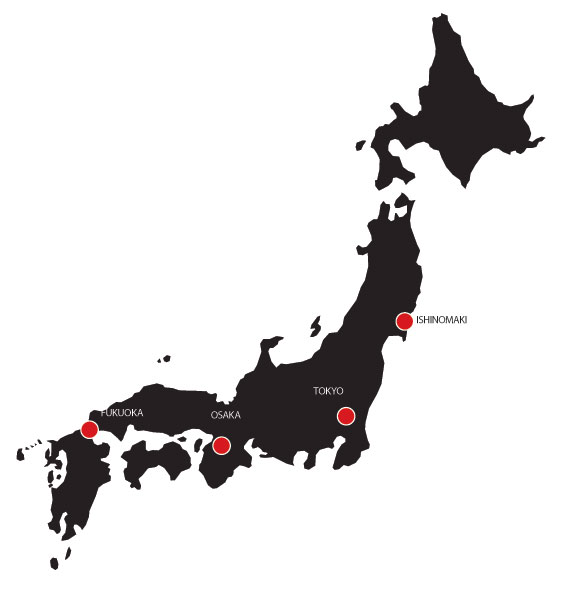
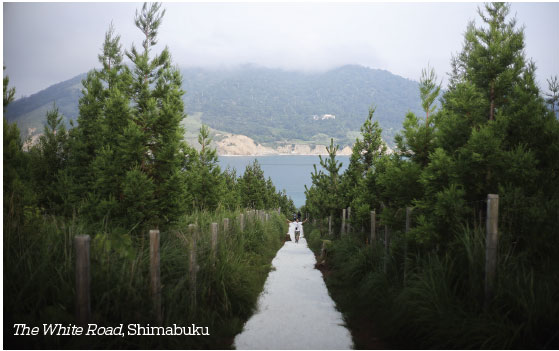
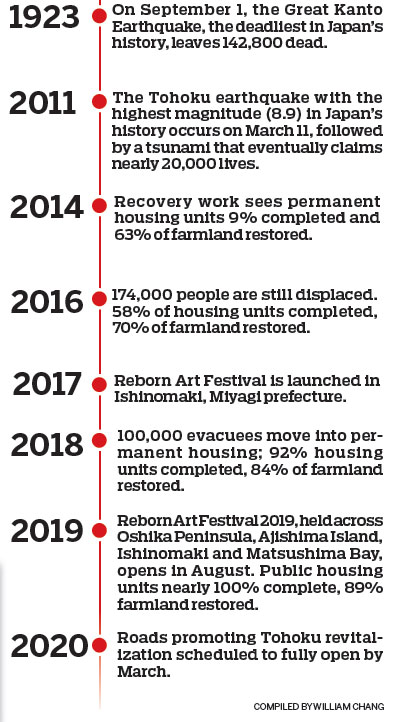
(HK Edition 08/23/2019 page8)